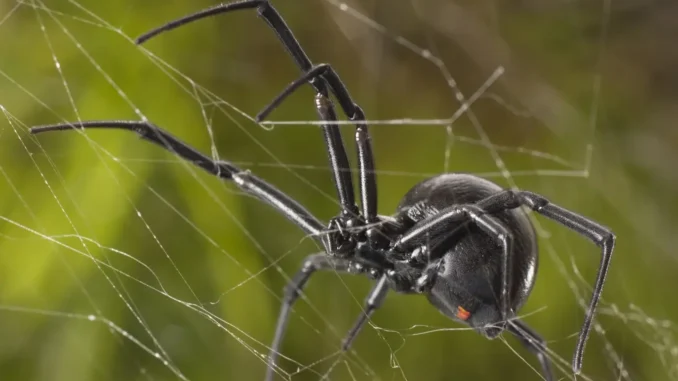
Spiders are among the most intriguing and misunderstood creatures on Earth. With over 50,000 identified species and an estimated millions more yet to be discovered, spiders play a vital role in ecosystems worldwide. From their dietary habits to their ability to survive harsh winters, spiders exhibit remarkable adaptations that ensure their survival. In this blog, we’ll explore some fascinating aspects of spider life, including their eggs, diets, seasonal behaviors, global populations, and even the ones that pose a danger to humans.
Spider Eggs: The Beginning of Life
Spiders reproduce by laying eggs, which are typically enclosed in silk sacs to protect them from predators and environmental damage. Depending on the species, a single egg sac may contain anywhere from a few dozen to thousands of eggs.
- Egg Development: Once laid, spider eggs can take several weeks to months to hatch. The temperature and humidity of the environment significantly influence the development time.
- Maternal Care: Some spider species, like wolf spiders, carry their egg sacs with them until the eggs hatch. Others, such as the black widow, guard their egg sacs aggressively.
- Hatching Process: Baby spiders, known as spiderlings, emerge from the eggs and often disperse using a process called ballooning, where they release silk threads to catch the wind and travel long distances.
What Do Spiders Eat?
Spiders are predominantly carnivorous and rely on their silk webs, venom, and hunting skills to capture prey. Their diets vary by species but generally consist of insects and other small arthropods.
- Common Prey: Flies, mosquitoes, moths, beetles, and even other spiders.
- Hunting Techniques:
- Web Spinners: Orb-weaver spiders construct intricate webs to trap flying insects.
- Active Hunters: Jumping spiders and wolf spiders stalk and pounce on their prey.
- Ambush Predators: Trapdoor spiders hide in burrows and snatch passing insects.
- Special Diets: Some spiders, like the Bagheera kiplingi, are known to consume plant material, making them an exception to the typical carnivorous diet.
How Many Spiders Are in the World?
Although there are over 50,000 known spider species, scientists estimate that the actual number may exceed 120,000 species. Spiders are found on every continent except Antarctica, thriving in diverse habitats ranging from tropical rainforests to deserts and even urban areas.
- Population Estimates: It’s believed that for every person on Earth, there are about 2.5 million spiders. The global spider biomass is estimated to consume 400-800 million tons of insects annually, playing a crucial role in controlling pest populations.
Where Do Spiders Go in the Winter?
Spiders have developed various strategies to survive cold winter months depending on their species and habitat.
- Outdoor Survival: Many spiders enter a state of diapause (a form of dormancy) to conserve energy during winter. Some burrow into the soil, under tree bark, or within leaf litter for warmth.
- Indoor Migration: House spiders seek refuge in human homes during winter to escape the cold. These spiders are adapted to indoor environments and remain active year-round.
- Antifreeze Adaptation: Certain species produce antifreeze-like compounds in their blood to prevent ice formation and survive sub-zero temperatures.
What Spiders Can Kill You?
While the majority of spiders are harmless to humans, a few species possess venom potent enough to cause serious medical issues or, in rare cases, death.
- Widow Spiders (Latrodectus spp.): Includes the black widow spider. Their venom contains neurotoxins that can cause severe pain, muscle cramps, and systemic effects.
- Recluse Spiders (Loxosceles spp.): The brown recluse can cause necrotic skin lesions and systemic symptoms if left untreated.
- Sydney Funnel-Web Spider (Atrax robustus): Found in Australia, this spider’s venom is highly toxic and can be fatal if not treated with antivenom.
- Brazilian Wandering Spider (Phoneutria spp.): Considered the most venomous spider in the world, its bite can cause intense pain, paralysis, and other severe reactions.
- Mouse Spider (Missulena spp.): While their venom is potent, fatalities are rare due to the availability of antivenom.
FAQ: Common Questions About Spiders
1. Are all spiders venomous?
Yes, almost all spiders have venom, but most species have venom that is harmless to humans and only effective on their small prey.
2. Can spiders bite humans?
Yes, spiders can bite humans, but most species are not aggressive and will only bite in self-defense. Bites from most spiders cause minor irritation similar to a mosquito bite.
3. How long do spiders live?
Most spiders live for about one to two years, although some tarantulas can live for decades in captivity.
4. Do spiders sleep?
Spiders do not sleep in the way humans do, but they experience periods of rest where their metabolic rate slows down.
5. Can spiders regenerate lost legs?
Yes, many spider species can regenerate lost legs during molting, especially when they are still growing.
6. Why do spiders spin webs?
Spiders spin webs primarily to capture prey, but some also use their silk for shelter, egg protection, and to navigate their environment.
7. Are spiders beneficial to humans?
Yes, spiders are beneficial because they help control insect populations, reducing pests like mosquitoes, flies, and agricultural pests.
Conclusion
Spiders are fascinating and essential creatures that play a critical role in maintaining ecological balance. While a few species pose a threat to humans, the vast majority are harmless and even beneficial by controlling insect populations. Understanding their life cycles, diets, and behaviors can help demystify these misunderstood arachnids and highlight their importance in the natural world.
Leave a Reply